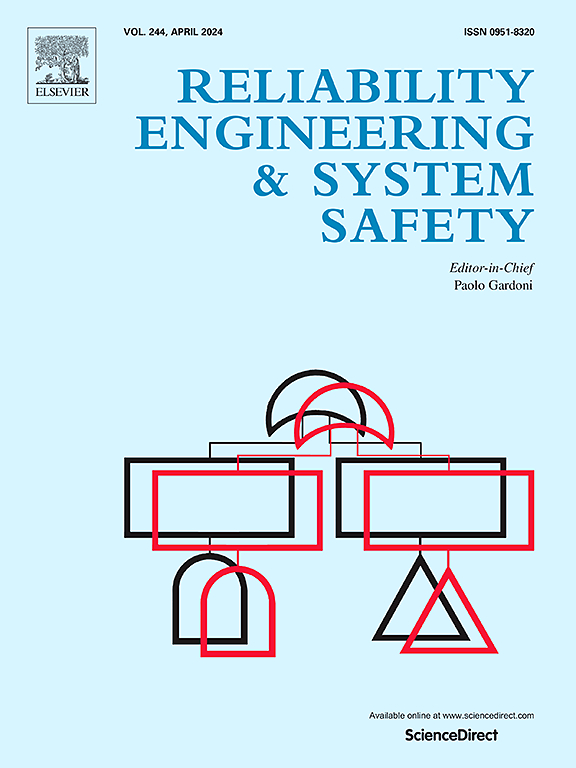Deep learning-stochastic ensemble for RUL prediction and predictive maintenance with dynamic mission abort policies
IF 9.4
1区 工程技术
Q1 ENGINEERING, INDUSTRIAL
引用次数: 0
Abstract
Accurate prediction of Remaining Useful Life (RUL) is crucial for optimizing maintenance strategies in industrial systems. However, existing models often falter under nonlinear and nonstationary degradation conditions with stochastic and abrupt failures, limiting their real-world effectiveness. To address this, we introduce a novel approach that combines advanced deep learning architectures with stochastic modeling and dynamic optimization techniques for more precise RUL prediction. This study has three overarching aims: First, to propose a hybrid ensemble model integrating convolutional neural networks, transformers, long short-term memory networks, and a smooth semi-martingale stochastic layer, a combination not previously explored, to effectively model both deterministic and stochastic degradation processes, thereby enhancing RUL prediction accuracy. Second, to introduce a reinforcement learning-based hyperparameter tuning method that dynamically adjusts model parameters, improving performance and reducing training time, which in turn optimizes the ensemble model’s predictive capabilities. Third, to integrate the refined RUL predictions and time-varying thresholds into a multi-stage optimization framework for mission cycle assignment and resource management. This facilitates real-time decision-making and the development of a dynamic mission abort policy, including mission shifting, re-engagement, post-abortion analysis, mission plan adjustments, and maintenance scheduling. Together, these innovations enhance RUL prediction accuracy, model adaptability, and operational efficiency, ensuring reliable and cost-effective maintenance strategies in mission-critical systems. The proposed model, validated using NASA’s C-MAPSS dataset, demonstrated superior RUL prediction accuracy over state-of-the-art methods, with sensitivity analyses and ablation studies confirming its stability and effectiveness.
求助全文
约1分钟内获得全文
求助全文
来源期刊

Reliability Engineering & System Safety
管理科学-工程:工业
CiteScore
15.20
自引率
39.50%
发文量
621
审稿时长
67 days
期刊介绍:
Elsevier publishes Reliability Engineering & System Safety in association with the European Safety and Reliability Association and the Safety Engineering and Risk Analysis Division. The international journal is devoted to developing and applying methods to enhance the safety and reliability of complex technological systems, like nuclear power plants, chemical plants, hazardous waste facilities, space systems, offshore and maritime systems, transportation systems, constructed infrastructure, and manufacturing plants. The journal normally publishes only articles that involve the analysis of substantive problems related to the reliability of complex systems or present techniques and/or theoretical results that have a discernable relationship to the solution of such problems. An important aim is to balance academic material and practical applications.
 求助内容:
求助内容: 应助结果提醒方式:
应助结果提醒方式:


